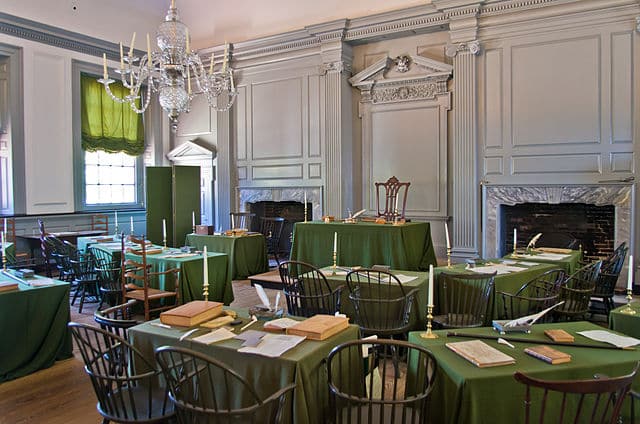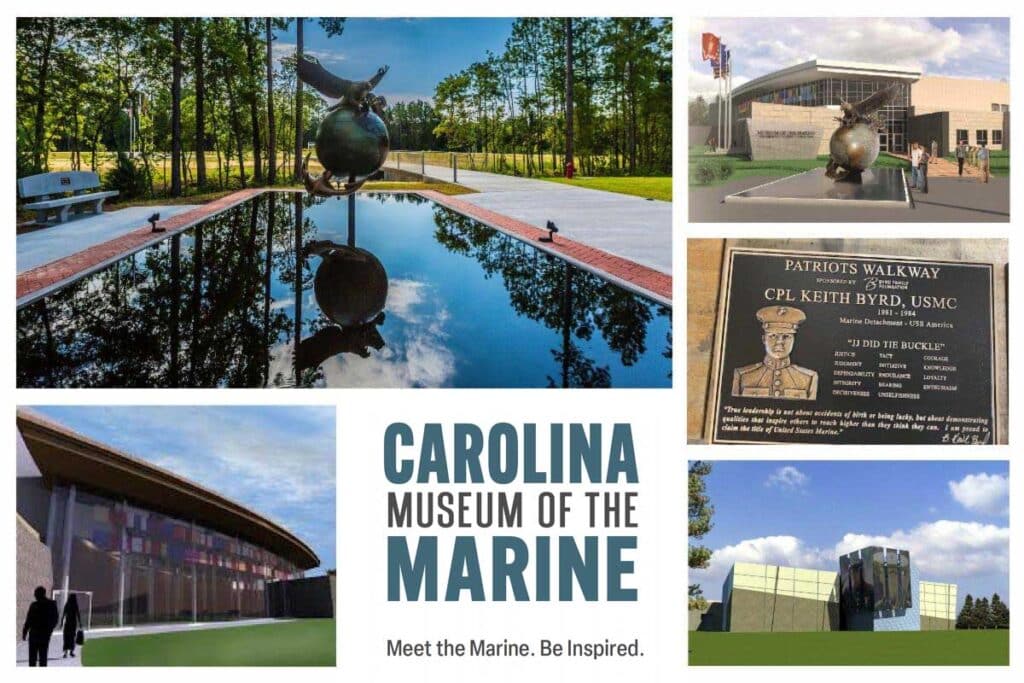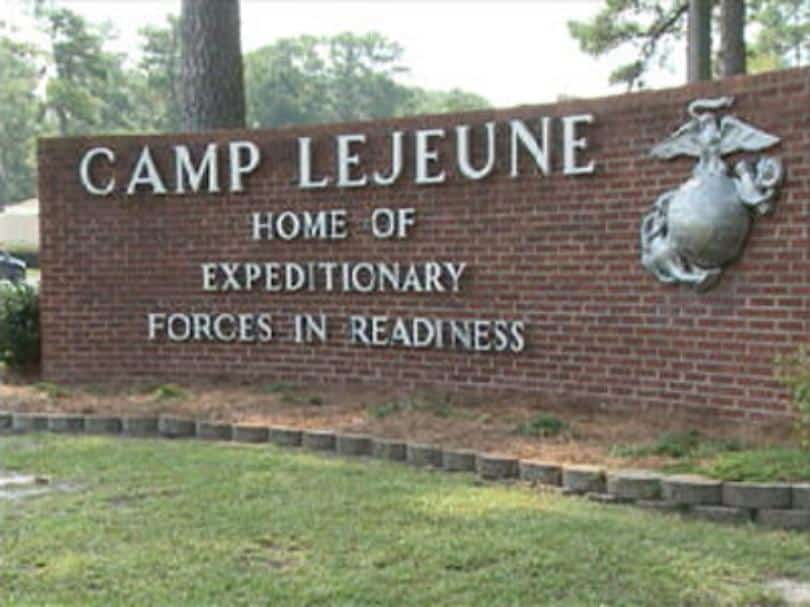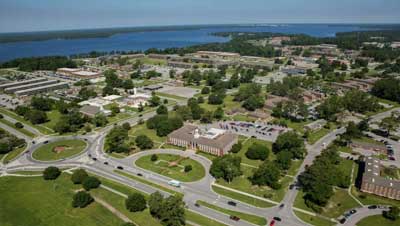Vol 1, No. 1, January 2022 FRONT AND CENTER – Introducing Al Gray Marine Leadership Forum

FRONT AND CENTER
Inaugural Issue. Vol. 1, No 1, January 2022
Mission
Honoring the legacy of Carolina Marines and Sailors and inspiring future generations.
Introducing Al Gray Marine Leadership Forum
The fundamental mission of Al Gray Marine Leadership Forum is to sustain the ideals that are the foundation of our nation and build principled committed citizens. Al Gray Marine Leadership Forum is developing and offering courses and resources that equip citizens to:
- Appreciate the history of our nation empowered by private energies and public responsibilities,
- Develop critical thinking skills that support civil discourse and effective civic participation,
- Recognize and respect our differences while valuing what we all have in common as Americans, and
- Celebrate our enduring form of government and the individual.
Professor James Danielson, PhD, has delivered an initial Al Gray Marine Leadership Forum’s course to students at Swansboro High School and recently presented to Marines at Camp Johnson the Forum’s Critical Thinking for Leadership and Civic Engagement course. Professor Danielson, a Marine veteran and professor of ethics for more than thirty years, is also developing additional Marine Leadership Foruom courses and he has written extensively. Courses under development include, among others, Leading Self, Leading Others; Ethics at Home, School and Work; and History of Political and Economic Thought.
We hope that you find it informative and thought provoking as Professor Danielson explores concepts that are as relevant today as they were at our Nation’s founding.
What Form of Government did the Constitution Create
James Danielson, PhD
Today most Americans are in the habit of referring to our form of government as a democracy, but in Article IV, Section 4 of the Constitution we read the following: “The United States shall guarantee to every State in the Union a Republican Form of Government,…” Were we to ask Americans to explain what they mean by democracy, we might find some confusion, or perhaps a general sense that democracy involves voting for candidates on the basis of promises made to do one thing or another, or perhaps even the lofty-sounding but incorrect assertion that in our democracy, “we the People” are the government. If we then asked for a description of a republic, we’d likely be met with similar confusion or vague notions that suggest an idea of what a republic is, but no certain understanding of it. Interestingly, if we could travel back to 1788/89 when the Constitution of the United States was ratified, we’d find a similar situation in which people knew what they wanted for their own lives and for those of family and friends, but of the best form of government for a free people there would be differing ideas about it, but the general sentiment would have been: “Protect our country from invasions from without, from criminals within, and beyond that, leave us alone.” Nevertheless, Americans were called upon to consider in state conventions whether to adopt the Constitution drafted in Philadelphia in the summer of 1787. We might then ask about the form of government Americans thought they were adopting in the new Constitution.
As much as Americans will call our government a democracy, we tend also to speak of the “Founding Fathers” as if they were a band of likeminded visionaries on the trail of a unique experiment in liberty. However impressive many of them were, they were also, like us, human, with the ambitions and schemes for achieving them that are common to human nature. For example, in 1781 the Articles of Confederation and Perpetual Union, our first Constitution, went into effect. Many people including Alexander Hamilton and James Madison did not like the Articles because the Articles affirmed a confederation of sovereign states with a weak unicameral legislature, often called the Confederation Congress, with no executive branch and no courts.
Letters between Thomas Jefferson and James Madison were not uncommon. The two statesmen, in fact, exchanged more than 1,250 letters ranging from brief notes to a seventeen-page letter written by Madison following the results of the Constitutional Convention.

Thomas Jefferson to James Madison
28 August 1789
“I must now say a word on the declaration of rights you have been so good as to send me. I like it as far as it goes; but I should have been for going further. For instance the following alterations and additions would have pleased me. Art. 4. ‘The people shall not be deprived or abridged of their right to speak to write or otherwise to publish any thing but false facts affecting injuriously the life, liberty, property, or reputation of others or affecting the peace of the confederacy with foreign nations.”

James Madison to Thomas Jefferson
17 October 1788
“This is a truth of great importance, but not yet sufficiently attended to: and is probably more strongly impressed on my mind by facts, and reflections suggested by them, than on yours which has contemplated abuses of power issuing from a very different quarter. Wherever there is an interest and power to do wrong, wrong will generally be done, and not less readily by a powerful & interested party than by a powerful and interested prince. The difference, so far as it relates to the superiority of republics over monarchies, lies in the less degree of probability that interest may prompt abuses of power in the former than in the latter…”

Please join us in supporting the mission of
Carolina Museum of the Marine
When you give to our annual campaign, you help to ensure that operations continue during construction and when the doors open!
Stand with us
as we stand up the Museum!


Where Thinking Begins
by Jim Danielson, PhD
In his writings on ethics, Aristotle observes that whatever human beings do can be done well or badly. Thinking is foremost among the attributes of human nature, and as life in our country presently demonstrates, it can be done very badly. Aristotle was the first philosopher to identify and explain the rudiments of the art of thinking. It is important when talking about this topic of reason, of logic and argumentation, to be aware about the significance of the worldviews we each have and through which we interpret our experiences. But before considering worldviews, it is important to observe that reason functions both in a speculative or theoretical way, and in a practical way.
Whichever way one is thinking, the argument goes, we begin our exploration from a fundamental principle of thought.
When reasoning in a theoretical way, the first principle from which we begin is the principle of non-contradiction: two halves of a contradiction cannot be true at the same time. It cannot be true that there is a God and there is no God since in order for the proposition that God exists to be true, it must also be true that the proposition that God does not exist is false. Once this basic rule of thinking is grasped, it becomes obvious that we cannot each have our own “truth,” because many assumed truths will turn out to be untrue.
When thinking in a practical way, the principle from which we proceed is that good should be done and pursued and evil avoided. When this principle is introduced, one is met right away with questions about the meanings of good and evil, and observations about how we don’t agree on what is good and what is evil. Actually, there is remarkable agreement on this and it comes out in conversation, and this because we share a common human nature. This is why we understand the Golden Rule, that we treat others in ways we wish to be treated, and in this short admonition we find a very effective test of good and evil.
Of course a brief introduction like this raises more questions than it answers, and this is cause for encouragement because the questions can form the basis of conversations among people that lead ineluctably to increased facility with thought and explanation, and a consequent increase in the health of society.
Did You Know?

This issue of FRONT AND CENTER features Marine Corps Base Camp Lejeune in Jacksonville, NC. Camp Lejeune encompasses 156,000 acres, with 11 miles of beach capable of supporting amphibious operations, 32 gun positions, 48 tactical landing zones, three state-of-the-art training facilities for Military Operations in Urban Terrain and 80 live fire ranges to include the Greater Sandy Run Training Area.
Information and photos from Wikipedia and Marines.mil



POSITION ANNOUNCEMENT
CHIEF EXECUTIVE OFFICER
CAROLINA MUSEUM OF THE MARINE
Carolina Museum of the Marine, which is located in Jacksonville, North Carolina, is seeking a Chief Executive Officer (CEO) who can lead the successful construction of the Museum and further the development and expansion of the Al Gray Marine Leadership Forum. Click here for more information and to apply.
Copyright January 2022
Carolina Museum of the Marine
2021-2022 Board of Directors
Executive Committee
BGen Dick Vercauteren, USMC (Ret) – Chair
Mr. Mark Cramer, JD – Vice Chair
CAPT Pat Alford, USN (Ret) – Treasurer
Col Joe Atkins, USAF (Ret) – Secretary
Col John B. Sollis, USMC (Ret) – Immediate Past Chair
General Al Gray, USMC (Ret), 29th Commandant – At-Large Member
LtGen Gary S. McKissock, USMC (Ret) – At-Large Membe
Members
Mr. Terry Branton
Mr. Tom DeSanctis
MyGySgt Osceola Elliss, USMC (Ret)
Col Chuck Geiger, USMC (Ret)
Col Bruce Gombar, USMC (Ret)
LtCol Lynn “Kim” Kimball, USMC (Ret)
CWO4 Richard McIntosh, USMC (Ret)
CWO5 Lisa Potts, USMC (Ret)
Col Grant Sparks, USMC (Ret)
GySgt Forest Spencer, USMC (Ret)
Staff
Ashley Danielson, Executive Director
SgtMaj Joe Houle, USMC (Ret), Operations and Artifacts Director
Richard Koeckert, Accounting Manager
Carolina Museum of the Marine is a nonprofit organization that is rigorously nonpartisan, independent and objective.


